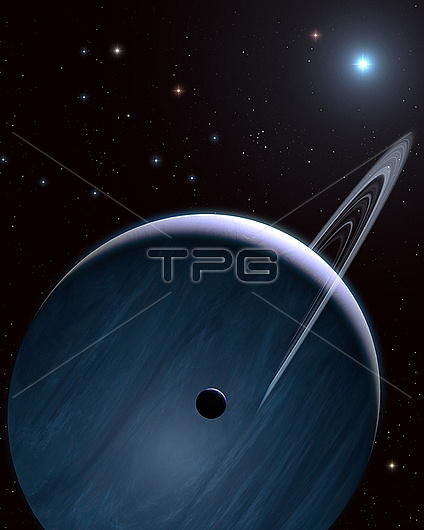
Scientists at Sheffield University, UK, used computational N-body simulations of star-forming regions to show that the 'BEAST' planetary systems - planets orbiting massive stars - can form from the capture of a free-floating planet, or the direct theft of a planet from one star to another, more massive star. They find that this occurs on average once in the first 10Myr of the evolution of a star-forming region, and that the semimajor axes of the hitherto confirmed BEAST planets (290 and 556 AU) are more consistent with capture than theft. Their results lend further credence to the notion that planets on more distant (>100 AU) orbits may not be orbiting their parent star. This image shows such a planet, orbiting a star that is not the one it was born orbiting.
| px | px | dpi | = | cm | x | cm | = | MB |
Details
Creative#:
TPG33546893
Source:
達志影像
Authorization Type:
RF
Release Information:
須由TPG 完整授權
Model Release:
N/A
Property Release:
N/A
Right to Privacy:
No
Same folder images:

 Loading
Loading